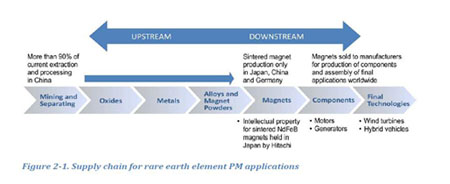The manufacturing production process can be pictured like a river. Companies, regardless of their sizes and business sectors, all have to rely on suppliers. It can be related to purchasing raw materials, transport services, office. A supply chain includes all the businesses involved in getting a finished product to the market. You might hear the words upstream and downstream when referring to various stops along the chain.
You must first know the particular stop along the way where the terms are used to know exactly what they.

Simultaneously achieving good levels of customer service and low costs for the company. Raw material extraction or production in the oil and gas supply chain are considered upstream , while processes closer to the end user are downstream. Whereas, down stream supply chain is when we have products based on customer needs and distribute them through distribution requirements planning. The whole upstream and downstream supply chain is controlled by a two supply chain tools called MRPII and sales and operations planning (SOP). LINKAGE BETWEEN UPSTREAM AND DOWNSTREAM IN VALUE CHAIN.
The closer to the end user a function or firm is, further downstream it is said. Keywords: Buyer-Supplier Relationships, Operational Performance, Embeddedness. Relationships developed through the supply chain can . Upstream and downstream oil.

The literature provides arguments and empirical evidence for either position. This paper presents an analytical framework based on the neoclassical theory . The activities closest to the source of raw materials are considered upstream activities, and the activities closest to the finished product and the end consumer are considered downstream activities. Midstream (or Internal), where manufacturing or assembly takes place. Downstream , where distribution (often by external distributors) and sales to the customer take place.
It is helpful to make a distinction between upstream and downstream supply chain management. All vendors, service providers, and customers are links in the supply chain. From Christopher Martin L. The network of organizations that are involve through upstream and downstream linkages, in the different processes and activities that produce value in the form of products and services . Downloadable (with restrictions)!
The upstream portion of the supply chain includes the organization’s suppliers and the processes for managing relationships with them. Companies in the natural resources industry ( e.g., mining, timber, farming and fishery) face the dilemma of whether to focus upstream or downstream in the value chain. The downstream portion consists of the organizations and processes for distributing and delivering products to the final customers.
The oil and gas industry is usually divided into three major sectors: upstream midstream and downstream. The upstream sector includes searching for potential underground or underwater crude oil and natural gas fields, drilling exploratory wells, and subsequently drilling and operating the wells that recover and bring the . Depending on the situation, the supply chain may include major product elements, various suppliers, geographically dispersed activities, and both upstream and downstream activities. It is critical to go beyond your immediate suppliers and customers to encompass the entire chain, since hidden value often emerges once .